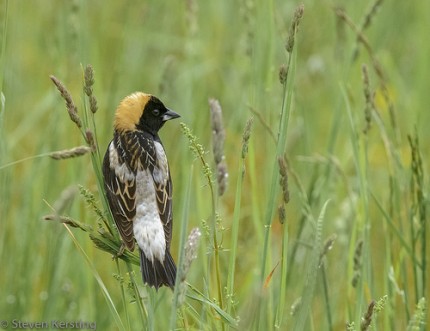Finding Common Ground in the Changes to Endangered Species Protection
Posted: June 21, 2013
Categories: Food in the News / GoodFoodBites
On May 31, 2013 Ontario’s Ministry of Natural Resources (MNR) announced its approval of a host of changes under the Endangered Species Act, 2007. Originally praised for bringing in the most robust piece of endangered species legislation in the country, the MNR is being criticized by environmental organizations and watchdogs like Ontario Nature and the Green Party for introducing a suite of exemptions that undermine its efficacy. There are many who are supportive of the changes, though, including the Ontario Federation of Agriculture whose president, Mark Wales, called them “positive, with more balance and common sense” in a recent article. What, then, accounts for this difference in opinion?
The government of Ontario explains that these changes are intended to simplify rules for landowners, municipalities and businesses by introducing standardized rules for species and habitat preservation and by harmonizing overlapping regulatory requirements such as those found in the Crown Forest Sustainability Act. The changes have sparked criticism for introducing troubling industry exemptions from these rules including a blanket five-year exemption for the forestry sector and others for pits and quarries, renewable energy, hydro, mining, infrastructure development, waste management, and property development. So while some welcome the bureaucratic overhaul, seeing it as a way to clarify an often-overwhelming permitting and approvals process, others are deeply concerned, seeing the industry exemptions in particular as a gutting if not outright dismantling of a conservation framework that was the culmination of a long and hard fought battle on behalf of our native flora and fauna.
The changes to the Endangered Species Act highlight the tension between resource development and economic benefits on the one hand, and environmental regulation and species protection on the other. Agriculture straddles these two perspectives, as agriculture is both an economic activity and one directly impacted by and acting on the environment. As such, farms and farmers provide an opportunity to bridge the gap between these often conflicting interests.
Initially, farmers were understandably wary of the ESA’s regulations. To cite one example, when the grassland bird, the bobolink, was listed as threatened under the ESA, farmers feared that the law would prevent them from harvesting their hay crops. Fortunately, however, farm and conservation organizations came together to propose a three-year exemption for farm activities while they worked together to figure out a way forward. Heeding this advice, the government established the Bobolink Round Table where farmers, conservationists and other stakeholders are working hard to develop solutions to preserve the bobolink’s habitat. But there are many ways that farmers can and do play a central role in protecting a host of at-risk species. For example, through a program called Alternative Land Use Services (ALUS), farmers are compensated to devote a portion of their property – often unused land on the farm – to ecosystem preservation including planting native grass, installing wildlife friendly fencing, and building waterfowl houses. Innovative schemes like ALUS can continue to bridge the divide between economic and environmental needs, serving the needs of both farmers and endangered flora and fauna.
Photo of bobolink by Flickr user skersting66.

